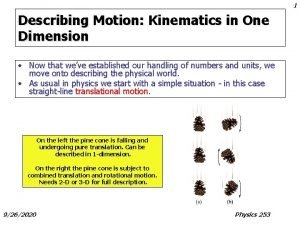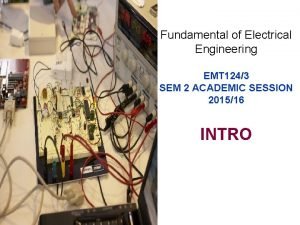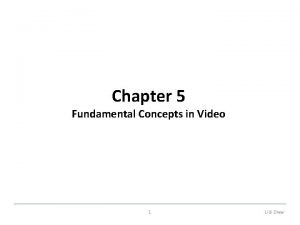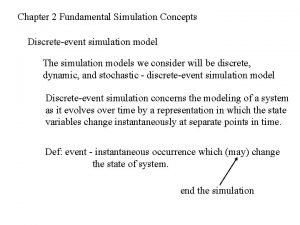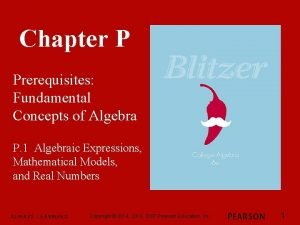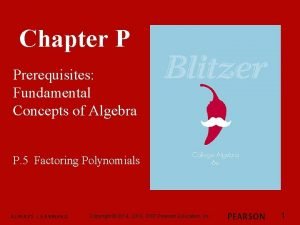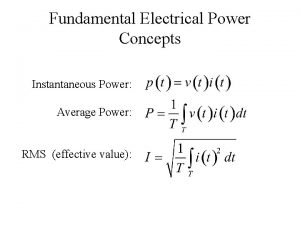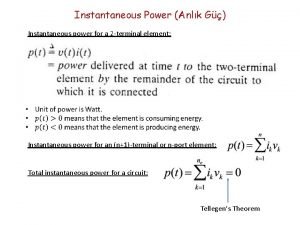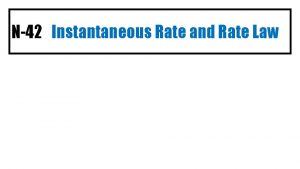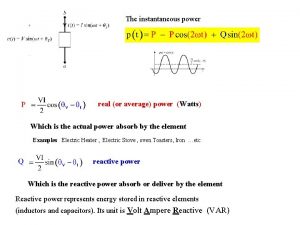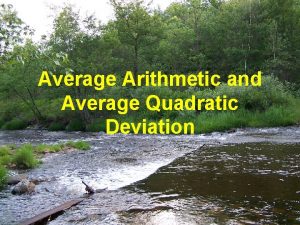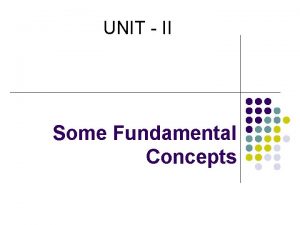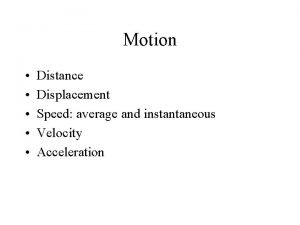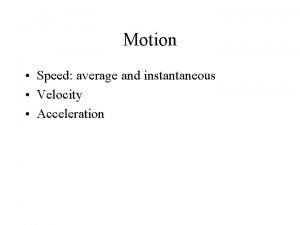Fundamental Electrical Power Concepts Instantaneous Power Average Power










- Slides: 10

Fundamental Electrical Power Concepts Instantaneous Power: Average Power: RMS (effective value):

AC Power Concepts • Source voltage waveform is assumed to be an undistorted sinusoid with zero phase angle. • Current waveforms may contain harmonic distortion components, which increases the RMS value of the current waveform, and hence the apparent power (but not real power).

Current Distortion A distorted current waveform can be decomposed into a set of orthogonal waveforms, (e. g. by Fourier analysis). The RMS value of the composite waveform (I) may be computed as the root-sum-squared of the RMS values of all of the orthogonal components {Ih}. o The DC component I 0 is usually (but not always) equal to zero. o The fundamental component, I 1 is the only component that contributes to real power. o All the other components contribute to the RMS harmonic distortion current, Id :

Total Harmonic Distortion (THD) is defined as the ratio of the RMS harmonic distortion current Id to the RMS value of the fundamental component I 1 : thus… (assuming zero DC)

Apparent Power Apparent power, S, is defined as the product of RMS voltage V, and RMS current I :

Real Power The real power contribution of the fundamental component of the current waveform is given by : Where F is the phase angle between the voltage and fundamental current component. Displacement Power Factor cos F is defined as the “displacement power factor” (DPF).

Power Factor We now can express real power in terms of apparent power S, DPF and THD : Power Factor is defined as the ratio of real power to apparent power:

Complex Power (Assumes current and voltage waveforms are undistorted sinusoids)

Magnetics Concepts

Inductors and Transformers
 Instantaneous vs average rate of change
Instantaneous vs average rate of change Instantaneous velocity vs average velocity
Instantaneous velocity vs average velocity Emt subject in engineering
Emt subject in engineering Motion in straight line
Motion in straight line Secam stands for
Secam stands for Basic concepts of simulation
Basic concepts of simulation What are the basic concepts of managerial economics
What are the basic concepts of managerial economics Basic concepts in sociolinguistics
Basic concepts in sociolinguistics Four fundamental oop concepts
Four fundamental oop concepts P+p+p+p algebra
P+p+p+p algebra Chapter p prerequisites fundamental concepts of algebra
Chapter p prerequisites fundamental concepts of algebra

